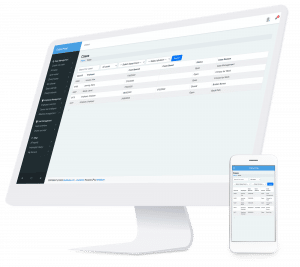So, you’ve made the wise decision to shift your practice from manual to a digital practice management system. This is a major step in the right direction. This transition promises a world of benefits: streamlined workflows, fewer administrative headaches, improved accuracy, and better overall patient care.
It’s worth noting, however, that simply inputting data into a computer doesn’t automatically make your system truly digital. Processes that still require significant manual data entry share many of the same pitfalls as pen-and-paper methods, including human error, duplication, and inefficiencies. A truly digital system should automate routine tasks, minimise repetitive manual input, and provide meaningful insights from your data.
However, it’s natural to have concerns about how to approach such a change. Questions like How will we migrate our data without disruptions? Will my team adapt to the new system? How can we ensure a smooth transition without impacting daily operations? are common and valid.
While the process may seem daunting, it doesn’t have to be. With careful planning, the right tools, and reliable support, transitioning to a digital practice management system can be a smooth and highly rewarding experience.
In this guide, we’ll address common challenges practices face during the transition and provide actionable steps to ensure the process is fast and accurate. With Meddbase as your partner, you’ll have the expertise and support needed to make this transformation a success.
Why the Shift from Manual to Digital Practice Management Can Be Difficult
While transitioning from manual to digital practice management is a strategic decision with undeniable long-term benefits, it is not without its challenges. Many practices underestimate the complexities involved, which can lead to frustration, delays, or even stalled progress. Understanding these potential obstacles is the first step in preparing for a smoother transition.
One of the biggest hurdles is staff resistance to change. Employees who are accustomed to manual processes may feel overwhelmed or apprehensive about adopting new technology. Concerns about learning curves, increased workloads during the transition period, or fear of making errors in the new system are common. Building confidence among your team and providing adequate training are essential for overcoming these challenges.
Another common concern is data migration. Shifting years of patient records, appointment histories, and billing information from paper or outdated systems into a digital practice management platform requires precision and care. Any errors or data loss during this phase can have lasting consequences. Clear planning, supported by technical expertise, is crucial to minimise risks during this step.
Integration with existing systems also poses a challenge for some organisations. Many practices already use multiple tools for different functions, such as scheduling, billing, and telehealth. Ensuring the new digital system integrates seamlessly with these tools is vital for avoiding workflow disruptions.
Lastly, cost and time investment can be intimidating factors. While the return on investment from digital practice management is well-documented, the upfront costs and time needed for implementation may cause hesitation. However, viewing this as a long-term investment rather than an immediate expense can help shift perspectives.
These challenges are not insurmountable. With the right approach, thorough preparation, and support from an experienced partner, each of these obstacles can be addressed effectively. In the next section, we’ll walk through the steps you can take to ensure your transition is as smooth and efficient as possible.
Steps to Ensure an Effortless Transition to Digital Practice Management
Below are four key steps to guide your organisation through a seamless transition.
Step 1: Assess Your Current Processes and Needs
Before making the switch, take time to evaluate your current workflows and identify areas that need improvement. Look for bottlenecks in scheduling, billing, data entry, or reporting processes. Consider the specific needs of your practice, such as multi-location management, telemedicine integration, or compliance with data protection regulations. Understanding these requirements will help you select a digital practice management system that aligns with your goals and addresses existing pain points effectively.
Step 2: Choose the Right Digital Practice Management Software
Selecting the right practice management software is a critical step in ensuring long-term success. Look for a solution that offers scalability, seamless integration with other tools, user-friendly interfaces, and reliable customer support. Additionally, ensure the software can grow with your organisation and adapt to evolving industry regulations. Meddbase is designed with these factors in mind, offering healthcare practices a robust and flexible platform to support their digital transformation journey.
Step 3: Plan Data Migration Carefully
Data migration is often one of the most challenging aspects of transitioning to a digital practice management system. Patient records, billing information, and appointment histories must be transferred accurately and securely to avoid disruptions. Work closely with your software provider to create a clear migration plan, including timelines, backup procedures, and validation checks to ensure data integrity. With Meddbase, data migration is managed systematically to minimise errors and ensure a smooth transfer.
Step 4: Train Your Team Effectively
Even the most advanced practice management software won’t deliver its full benefits if your team isn’t confident using it. Effective training is essential for helping staff adapt to the new system and understand its functionalities. Offer structured training sessions, provide user manuals, and encourage open communication for addressing concerns. With Meddbase, ongoing support and comprehensive training resources ensure your team feels prepared and capable of managing the new system efficiently.
How Meddbase Can Support you During Your Transition
At Meddbase, we’ve guided many practices through the transition to digital systems, including those moving from decades of paper-based records. Our approach is built on experience, adaptability, and a commitment to understanding the unique needs of every client.
One of the key strengths of Meddbase lies in our cloud-based infrastructure, which provides secure access to data from anywhere, ensures seamless updates, and offers scalability to grow alongside your organisation. This eliminates many of the hardware and maintenance concerns associated with traditional systems.
We also prioritise robust customer support throughout the transition. From the initial planning stages to post-implementation follow-ups, our team is available to address concerns, offer guidance, and ensure your system is running smoothly. Comprehensive training programmes equip your team with the knowledge and confidence needed to fully utilise the platform’s capabilities from day one.
Unlike one-size-fits-all solutions, Meddbase understands that every practice operates differently. That’s why we offer customised experiences tailored to your specific workflows, goals, and challenges. Whether it’s migrating complex legacy data, integrating with existing tools, or designing unique reporting capabilities, we adapt to your requirements to deliver meaningful results.
Most importantly, we value collaboration. Every step of the process is handled with transparency, care, and a focus on minimising disruption. Our experience has shown that even transitions from outdated paper records can be managed efficiently, with minimal data loss and maximum operational continuity.
The shift to digital practice management doesn’t need to feel overwhelming. If you’re ready to explore how Meddbase can make your transition smooth, effective, and impactful, we invite you to plan a call with our sales team. Together, we’ll map out a tailored strategy to guide your practice into a future of smarter, more efficient healthcare management.





